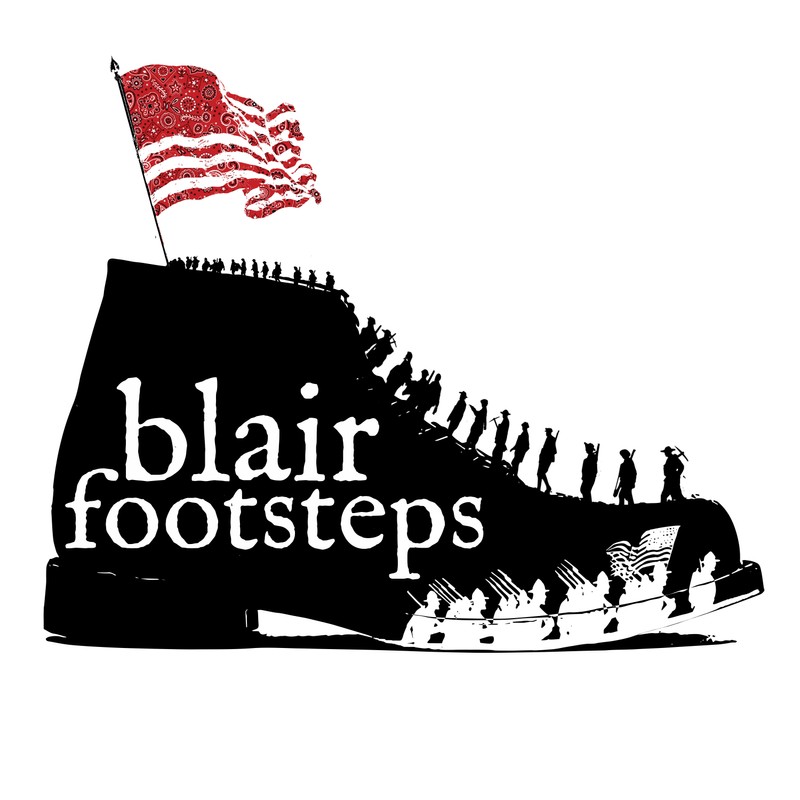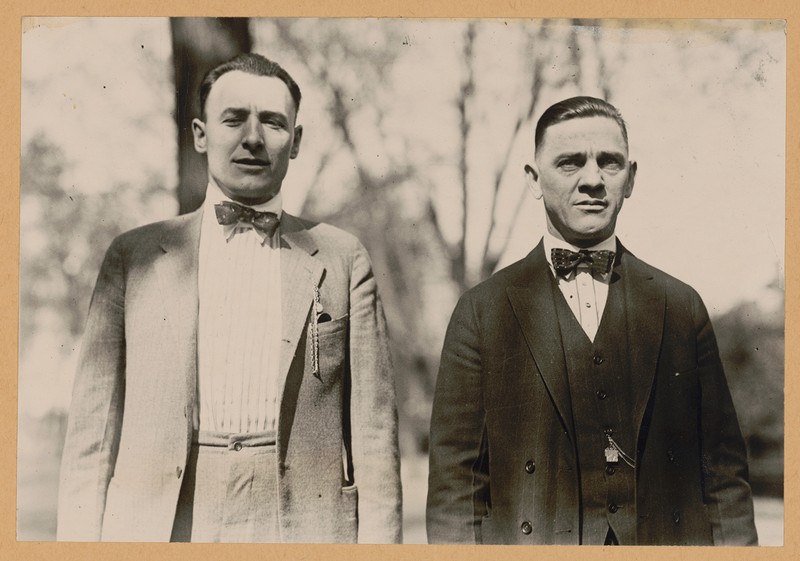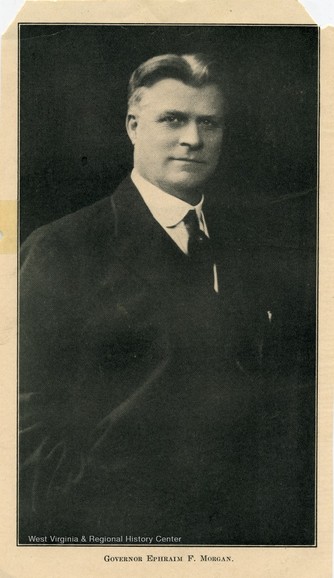Blair Footsteps Tour #3: Madison
Introduction
Text-to-speech Audio
The armed march of roughly 10,000 West Virginia coal miners—called the "Red Neck Army," for the red bandannas they wore to identify themselves—nearly ended without violence at a baseball field in Danville-Madison on August 26, 1921. That afternoon, as miners crowded the streets of this small town, UMWA District 17 leaders Frank Keeney and Fred Mooney arrived with a message from U.S. Army General Henry H. Bandholtz, who had just arrived in Charleston, West Virginia with the stern admonition that military force would be used to suppress the miners if they continued their intended assault on Logan and Mingo counties. Keeney and Mooney succeeded in turning most of the Red Necks back, but the effort proved vain when news arrived of a West Virginia State Police raid on union miners in nearby Sharples.
-----
This entry is a digital companion to the Blair Footsteps exhibit trail, available to the public from August 30 - September 11, 2021 as part of the Battle of Blair Mountain Centennial. The map location of this entry indicates where the temporary exhibit can be found. The Madison Station of Blair Footsteps is located across the street from the Bituminous Coal Heritage Foundation Museum in downtown Madison.
Images

UMWA District 17 leaders Fred Mooney (left, Secretary-Treasurer) and Frank Keeney (right, President) in 1922.

Brigadier General Henry H. Bandholtz (often called "Harry"). Bandholtz was firm but fair during West Virginia's 1921 crisis

Ephraim Morgan (1869-1950), Republican governor of West Virginia from 1921 to 1925. He had little sympathy for organized labor, and clashed repeatedly with the UMWA.

Backstory and Context
Text-to-speech Audio
United Mine Workers of America (UMWA) District 17 leaders Frank Keeney and Fred Mooney sped along the dirt backroads of Kanawha and Boone County in the morning hours of August 26, frantically sharing General Bandholtz’s warning that the Red Neck Army should disperse or risk annihilation at the hands of the U.S. military. Sometimes they passed contingents of miners on the rough roadway, delivering the message as expediently as possible. At other times, their fast-moving car was nearly fired upon by jumpy miners. Whatever the risk, Keeney and Mooney could not pause for long—they had to get ahead of the army's vanguard at Madison before it crossed into Logan County and the shooting started.
A little north of Madison, the pair of men spoke to a unit of miners camped on Drawdy Creek. Still stinging from Mother Jones’s fake telegram just days prior in Marmet, the miners were naturally skeptical of people waving more official pieces of paper commanding them to disband, even if this time it was from an Army general. Their attitude softened, however, when Harvey Dillon, a coal miner and Army veteran who had served under General Bandholtz in the Philippines twenty years prior, reviewed the memo and verified the General’s signature to the others present. For Dillon's men, the case was made—they would not and could not go to war against the United States. Keeney and Mooney continued southward.
They managed to get ahead of the bulk of the army in Madison at about noon, and the two men scrambled around town telling everyone they could find to meet at 2:00pm at the ballfield in neighboring Danville. Once several hundred men were assembled there, Keeney affirmed the rumors that had been running through the ranks: Washington had dispatched a Brigadier General to Charleston to end the march. The United States Army would not be far behind if the miners did not abort their campaign, a point Keeney emphasized by reading aloud the contents of Bandholtz's proclamation. Many bristled at the thought of abandoning this long-awaited opportunity to break the anti-union stronghold of Logan County, and rescue their imprisoned brethren from martial law in Mingo County. But most reluctantly heeded Keeney and Mooney’s advice.
The union leaders departed hastily to report their apparent triumph to General Bandholtz back in Charleston, but what they had accomplished in Madison proved only a brief respite, not an armistice. For hours, hundreds of miners waited for the promised trains to appear that would take them home. But Governor Ephraim Morgan's administration in Charleston dragged its feet, and thus a large armed force was still in Madison when a different kind of train arrived.
A bullheaded miner named Bad Lewis White, long suspected by Keeney and Mooney of being a double agent in the employ of Don Chafin, had hijacked a train in Clothier. White headed north to Madison where he spread the word—much exaggerated in the telling—of a West Virginia State Police raid on Sharples, about fifteen miles to the south, claiming that women and children had been shot. The news spread like wildfire, reigniting the movement south. A group of Red Necks clambered aboard White's stolen train, which charged south along Spruce Fork [River] toward Logan. Another battalion led by Ed Reynolds and Bill Blizzard, convinced that Keeney and Mooney had only been pretending to follow General Bandholtz's instructions, continued their advance toward Logan on foot.
-----
In late August and early September 2021, a small team of volunteers from the Preservation Alliance of West Virginia will install Blair Footsteps, a temporary outdoor exhibit trail which guides visitors through some of the important sites and events along the route of the miners’ march. The exhibit is funded in part by a grant from the National Coal Heritage Area Authority, and is an official event of the Battle of Blair Mountain Centennial.
Sources
Green, James. The Devil Is Here in These Hills. Edition First. New York, New York. Atlantic Monthly Press, 2015.
Lee, Howard B.. Bloodletting in Appalachia: The Story of West Virginia's Four Major Mine Wars And Other Thrilling Incidents On Its Coal Fields. Parsons, West Virginia. McClain Printing Company, 1969.
Savage, Lon. Thunder in the Mountains: The West Virginia Mine War, 1920-1921. Pittsburgh, Pennsylvania . University of Pittsburgh Press, 1990.
Shogan, Robert. The Battle of Blair Mountain: The Story of America's Largest Labor Uprising. Boulder, Colorado. Westview Press, 2004.
Library of Congress
Library of Congress
